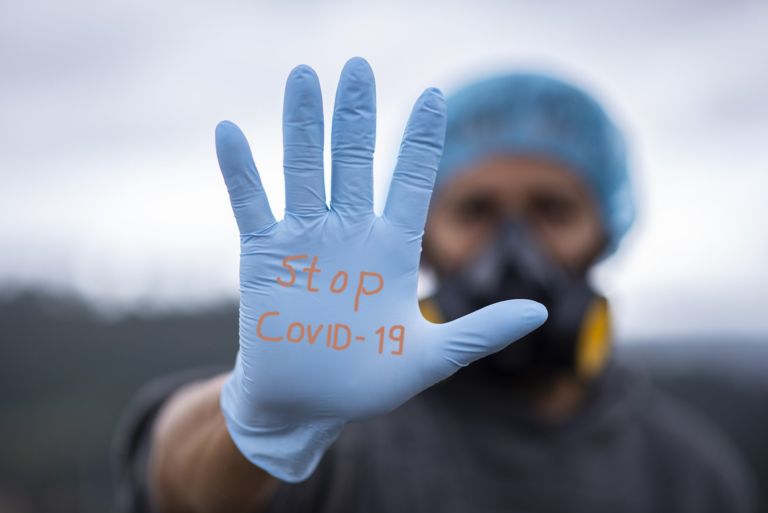Image: Elementary schoolchildren in Nevada erupt in cheering, jumping, and dancing when told that the mask order against them was just lifted. In enjoying seeing their former freedom restored they are being joined by more and more students in North Carolina as adults back away from their antiscientific child abuse. Last week, as the General Assembly was debating (and ultimately passing) the “Free the Smiles” Act to allow parents to opt their children out of school mask mandates, Gov. Roy Cooper suddenly decided to recommend ending local and school mask mandates on the magical date of March 7. His announcement being more reactive to political trends and the need to at least appear in line with them, Cooper and state health bureaucrat Kody Kinsley relied an awful lot on use of the word if.
This past week 99.5% of people in NC were estimated to pose no threat of passing along COVID-19 to anyone. Furthermore, 98.6% of adult North Carolinians — and 97.2% of North Carolinians of any age — are estimated to have either been at least partially vaccinated or acquired natural immunity against Covid-19 or both. (See this discussion about those percentages, “How Come the Immunity Estimates Are So High When Case Numbers Are So High?“)
Here is the NC Threat-Free Index for the week ending February 21. All of the statistics generated for the NC Threat-Free Index are based on numbers provided by government sources. This link gives a detailed explanation of how each statistic is derived.
- As of February 21: 2,490,831 North Carolinians were presumed to be recovered from Covid-19.
- Active cases comprised just 2.2% of NC’s total case count. A case of Covid-19 isn’t a permanent infection. Only someone with an active case of the virus can conceivably transmit it to you. The total case count given banner headlines comprises active cases, the very large proportion of people who have recovered, and the very small proportion of people who have died with Covid-19.
- Active cases represented 0.5% of NC’s population. Active cases are lab-confirmed cases of Covid-19 minus recoveries and deaths.
- Also, 32 out of every 33 (96.9%) of NC’s total cases were recovered. People who have recovered from Covid-19 are no longer infectious. More importantly, a large and growing body of empirical research (“science and data”) shows that they have acquired persistent, long-lasting, and robust natural immunity to Covid-19 — immunity that is stronger against Covid-19 and its variants than even that enjoyed by those who are fully vaccinated.
- Only 0.2% of people in NC had died with Covid-19. This statistic must be phrased in that manner (“with,” not “from”) because of the lack of clarity over the actual cause of death and because of the research finding as well as DHHS and the CDC admitting that a significant proportion of COVID-19 hospitalizations and deaths were “not related to Covid-19.” A recent investigative report found that 1 in 3 Covid patients at UNC Health and a whopping 60% of Covid patients at WakeMed had gone to the hospital for non-Covid reasons.
- All things considered, 99.5% of people in NC posed no threat of passing along Covid-19 to anyone. This estimate will fluctuate based on relative growth in lab-confirmed cases vs. recoveries.
Immunity, protection, post-vaccination infections, and reinfections
For the week ending February 21:
- Now 98.6% of adult North Carolinians are estimated to have some protection against Covid-19, whether it’s through vaccination (this group alone is at 75%) or the stronger and more durable natural immunity from prior infection (there are as of this date 150 research studies attesting to the strength of natural immunity) or both. Adults are the ones most at risk of losing their jobs, access to government services, ability to travel, ability to buy groceries, etc., for not being vaccinated even though the ostensible public interest is in immunity.
- Conversely, as of February 21, only 1.4% of adult North Carolinians were estimated to have neither vaccine-induced protection nor natural immunity.
- Looking at the total population, 97.2% of North Carolinians are estimated to have some protection against Covid-19. These estimates are based on DHHS case numbers, CDC estimates of actual infections, DHHS estimates of current vaccinations, and the formula outlined here.
- The most recent update from DHHS found 492,345 post-vaccination infections among 6,020,527 fully vaccinated individuals, and the estimated post-vaccination infection rate for the week ending February 7 was 8.2%. Given how strictly DHHS defines a “post-vaccination infection” — as of now, someone must be at least two weeks past receiving the second of two injections; anyone with only one injection or within two weeks of receiving the second “counts” as an unvaccinated case of Covid — the actual post-vaccination infection rate could be much higher than the estimated rate.
- Also as of the week ending February 7, 39% of Covid-19 cases in North Carolina over the previous week were to people considered fully vaccinated. That is a very high proportion for something described by Pres. Joe Biden on January 4 as a “pandemic of the unvaccinated.” For the month of January, 40.6% of Covid-19 cases in North Carolina were to people considered fully vaccinated — up from 35.0% in December.
- As of the week ending February 7, there had been 83,573 reinfections for those with prior lab-confirmed cases of Covid-19, and the estimated reinfection rate was 3.5%. For reasons discussed here, the actual reinfection rate is likely much lower than the estimated rate.


